BUDAPEST FUA (XVIII. district and Vecsés)
Objectives
- Highlight the importance of city logistics as a relevant
part of Budapest SUMP (Balázs Mór Plan - Develop a comprehensive city logistics legislation both
for the city and for the regional level - Understand the needs of relevant stakeholders in
terms of urban freight deliveries - Develop pilot actions for testing and experiencing
sustainable city logistic activities, solutions
The territorial context
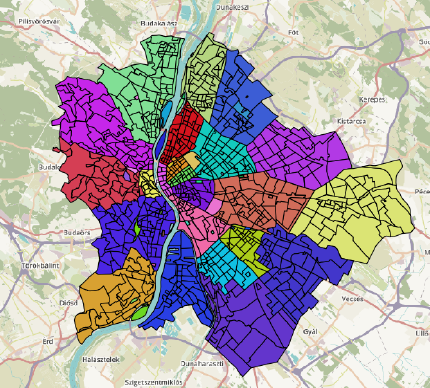
In the SULPiTER project we handle the FUA of Budapest on
two levels:
- The focus area consists of the territory of the two project partners, the 18th district of Budapest and the City of Vecsés.
- The outlook area of our study is the area of the whole city of Budapest (the other 22 district out of the 23).
The connection between the 18th district and Vecsés is not only, that they are neighbouring areas along the boundary of the capital, but also that the Budapest Ferenc Liszt International Airport (BUD) is located among others partly in the district and partly in Vecsés.
The FUA of Budapest upon the OECD classification is categorised as large metropolitan area of almost 3 000 000 inhabitants, out of the City of Budapest, capital of Hungary has 1 700 000 inhabitants. The administrative system is very special, Budapest is composed of 23 local municipalities having almost the same rights and responsibilities as the city of Budapest.
- Km2 involved in the study area: 74,78 km² for the focus area and 525 km² for the outlook area
- Inhabitants: 122 076 for the focus area and 1 733 685 for the outlook area
- N. of municipalities involved: 2 for the focus area and +23f for the outlook area
- N. of working units (employers): 3167 operating companies (focus area)/ 51369 operating
companies (outlook area) - N. of zones used in the tool and in the o/d matrix: Altogether 20 zones were created from the 23 district of Budapest and the city of Vecsés for the interviewing
- Alltogether 381 interview took place, 111 in the focus area 111 and 270 in the outlook area.
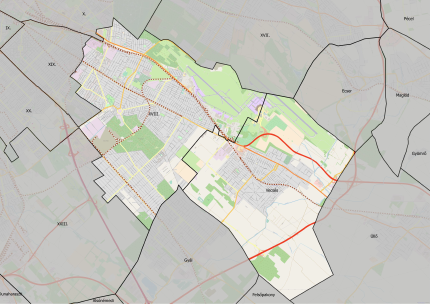
Results generated by the tool application
Features of the interviewed shops
- 3,5 employees on average
- 50% are below 40 m2
- 22% of does not have an inside depot
- 14% has external depot
- external depot distance from the shop is 29 km on average
- 39% has their own fleet, usually it means onlyone vehicle
- 47% of the vehicles is car, 23% van, but truck, motorcycle, cargo-bike is also used in some
cases
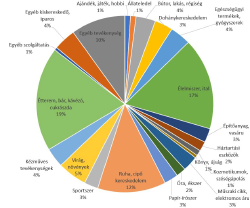
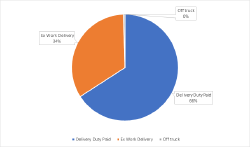
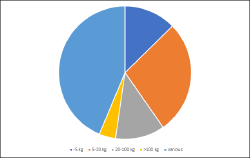
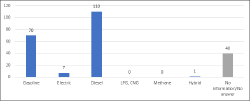
Features of the supplying process
- in 39% of the cases both the shop owner and the consignor, in 38% the shop and in
23% the consignor decides the mode of the delivery
- within all the supplying processes 39% uses the services of a third party
- 12,6% of the shops uses the services of express couriers
- 3/4 of the deliveries take place once a week or more rarely
- most common type of load units is box
Problems
-55% the parking and loading possibilities are not suitable in the area
-9% the loading bays cannot be reached because of different physical obstacles o not proper legislation
-Almost 10% of the problems reported leads to irregular behaviour in everyday situations.
Suggestions
-34% establishment of more loading bays
-19% change of the legislation
Freight Quality Partnership (FQP)
FQP members are selected from three groups in the immediate catchment area of the Budapest Liszt Ferenc International Airport:
- Public-sector stakeholders: town/regional planners, transport specialists and the infrastructure and service providers were invited
- Private sector stakeholders: logistic operato companies and the companies important for the FUA freight transport were included
- Third group: logistic and goods transport and industry associations
- 5 meetings are scheduled for 2018-2019
- First FQP event was organized by the Budapest Airpor Regional Development Cluster as an information event to share the results of the surveys and the curren status of transportation in the Budapest FUA in general and with specific focus on the airport region.
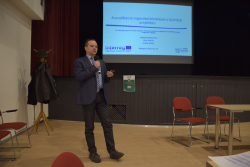
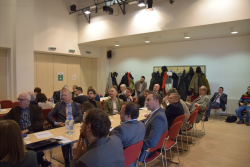
Logistics Sustainability Index (LSI) – current situation
Process of the LSI index calculation:
1) Selecting the scope of action.
2) Selecting criteria. The criteria are understood
within the scope of action.
3) Selecting indicators. Indicators are the calculated values of the criteria.
4) Weighting.
5) Normalization.
6) Calculation of LSI.
| Impact area | Performance |
| Economy and Energy | 0,325 |
| Environment | -0,294 |
| Transport and mobillity | 0,232 |
| Society | 0,265 |
| Policy and measure maturity | -0,275 |
| Social acceptance | 0,227 |
| User uptake | 0,099 |
| LSI | 0,579 |
Data Interpretation
- In Budapest freight traffic access is regulated by vehicle weight, environmental category and the purpose of the delivery filtering a lot the vehicles entering to the inner part of the city.
- Deliveries are often unregulated causing congestions and disturbances for private or public transport on delivery site.
- Many delivery problems are derived from the high percentage of vehicles under 3,5t and from the lack of strict legislation on delivery times in central area.
- Impacts of dense traffic in Budapest result the instability of deliveries in time and make deliveries inefficient both for transporters and for clients.
To read more information about Budapest Functional Urban Area click here
